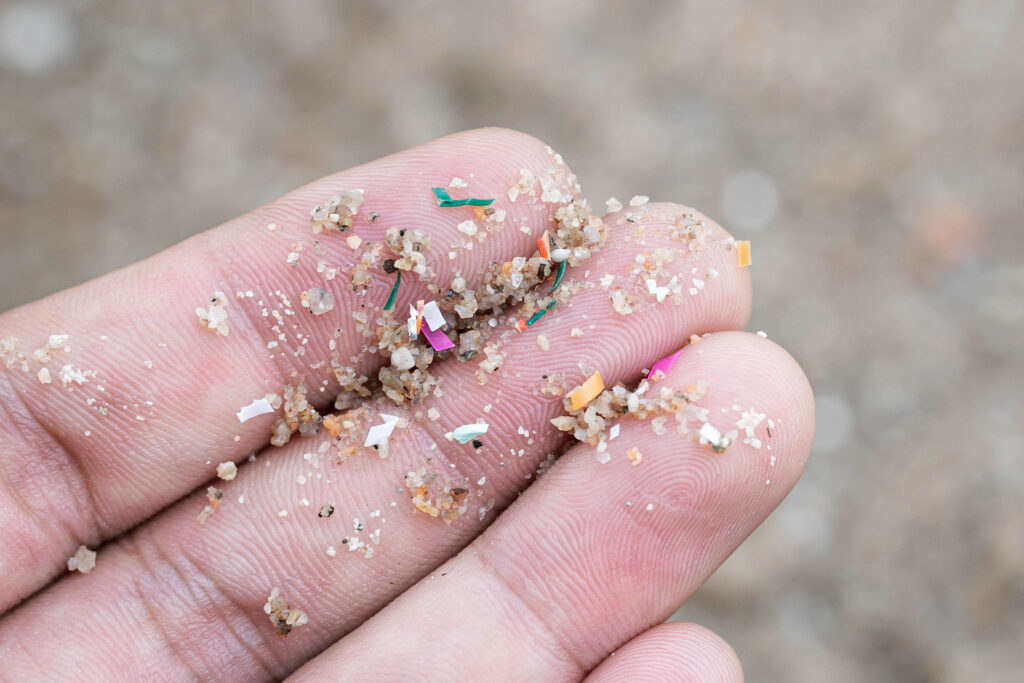Plastic has become an integral part of our daily lives, from packaging to clothing and even personal care products. However, the environmental and health consequences of plastic waste are becoming increasingly apparent, particularly in the form of microplastics—tiny plastic particles measuring less than 5mm in size. These microplastics are found everywhere: in the oceans, in the air, and even in the food we eat and the water we drink. While microplastics affect everyone, young people are particularly vulnerable to the long-term health risks they pose.
What Are Microplastics?
Microplastics are created when larger plastic waste—like bottles, bags, and packaging—breaks down into smaller pieces due to environmental factors such as sunlight, wind, and waves. They also originate from sources like synthetic fibers in clothing, microbeads in personal care products, and tire wear. These particles are so small that they escape water filtration systems and end up in rivers, oceans, and eventually in the bodies of fish, birds, and other wildlife. Even more alarming, microplastics have now been found in human blood, placenta, and lung tissues.
Because microplastics are so pervasive, they have become nearly impossible to avoid. They have been discovered in tap water, bottled water, sea salt, and even in the air we breathe. This raises serious concerns about the impact they may have on our health, particularly the health of children and teenagers.
How Microplastics Affect Health
Although research on the health effects of microplastics is still ongoing, initial findings suggest that prolonged exposure could be harmful to human health, especially for youth. The main risks stem from the fact that microplastics contain a variety of toxic chemicals, including additives like flame retardants and plasticizers, which can leach out into the environment and enter our bodies.
For young people, the effects of microplastic exposure can include:
- Respiratory Issues:
Microplastics are not only ingested through food and water but also inhaled from the air. In urban areas, particles from synthetic fibers and tire wear often accumulate in the atmosphere. These particles can settle in the lungs, potentially leading to respiratory issues like asthma or chronic inflammation. - Digestive System Impact:
Consuming food or water contaminated with microplastics introduces these particles into the digestive system. While the body may excrete some of them, there is concern that prolonged exposure could lead to inflammation, disruption of the gut microbiome, or other gastrointestinal issues. - Endocrine Disruption:
Perhaps most concerning are the endocrine-disrupting chemicals found in microplastics. These chemicals, such as bisphenol A (BPA) and phthalates, have been linked to hormone imbalances that can affect growth and development in children and teenagers. For youth, whose bodies are still in critical stages of development, exposure to these chemicals may result in long-term effects on reproductive health, cognitive development, and even metabolic disorders.
Why Youth Are Especially Vulnerable?
Children and teenagers are at a higher risk of being negatively affected by microplastics for several reasons. Their bodies are still developing, which means that any disruption in their growth process could have lasting consequences. Moreover, they consume more food, water, and air relative to their body weight compared to adults, increasing their exposure to these harmful particles.
The hormonal systems of young people are also particularly sensitive during adolescence. Since some of the chemicals found in microplastics mimic or block natural hormones, the potential for developmental problems, such as delayed puberty, reproductive issues, or cognitive impairments, is heightened. These impacts can affect not only their immediate health but also their long-term potential as adults.
Combating the Microplastic Crisis: What Can We Do?
While it’s impossible to entirely eliminate exposure to microplastics, there are steps that individuals, communities, and governments can take to reduce their prevalence and protect the health of future generations.
- Reduce Single-Use Plastics:
One of the most effective ways to combat microplastic pollution is by reducing our reliance on single-use plastics. Opt for reusable alternatives like metal water bottles, cloth shopping bags, and glass containers to limit the amount of plastic waste that ends up in the environment. - Support Waste Management and Recycling Initiatives:
Improving waste management and recycling systems can prevent plastics from breaking down into microplastics. Participating in local clean-up programs and advocating for better recycling policies can help tackle this problem at its source. - Choose Eco-Friendly Products:
Many personal care products, like exfoliating scrubs, contain microbeads that contribute to plastic pollution. Opt for natural, eco-friendly products that are free from microplastics and packaged in sustainable materials. - Raise Awareness:
Educating the public, especially young people, about the dangers of microplastic pollution is crucial. By raising awareness in schools and communities, we can encourage individuals to make more sustainable choices and advocate for stronger environmental protections. - Push for Policy Change:
Governments must play a key role in addressing the microplastic crisis. Stronger regulations on plastic production, better waste management infrastructure, and bans on microplastic-containing products like microbeads are essential to mitigating this growing threat.
A Call to Protect Our Youth
Microplastics are an invisible yet insidious threat to the health of young people worldwide. As we continue to learn more about their impact, it is clear that immediate action is needed to reduce exposure and prevent long-term harm. While we cannot completely eliminate microplastics from our environment overnight, we can take steps to protect future generations by making more sustainable choices and advocating for systemic change.
Our youth deserve a future where they can grow and thrive without the looming danger of microplastic contamination. By coming together as individuals, communities, and policymakers, we can begin to address this global issue and safeguard the health and well-being of the next generation.





